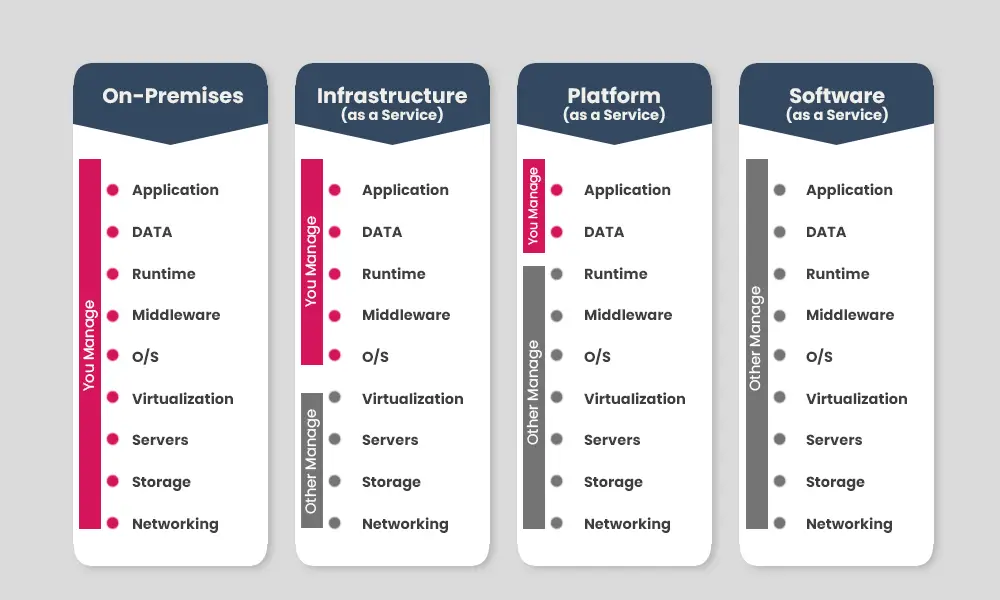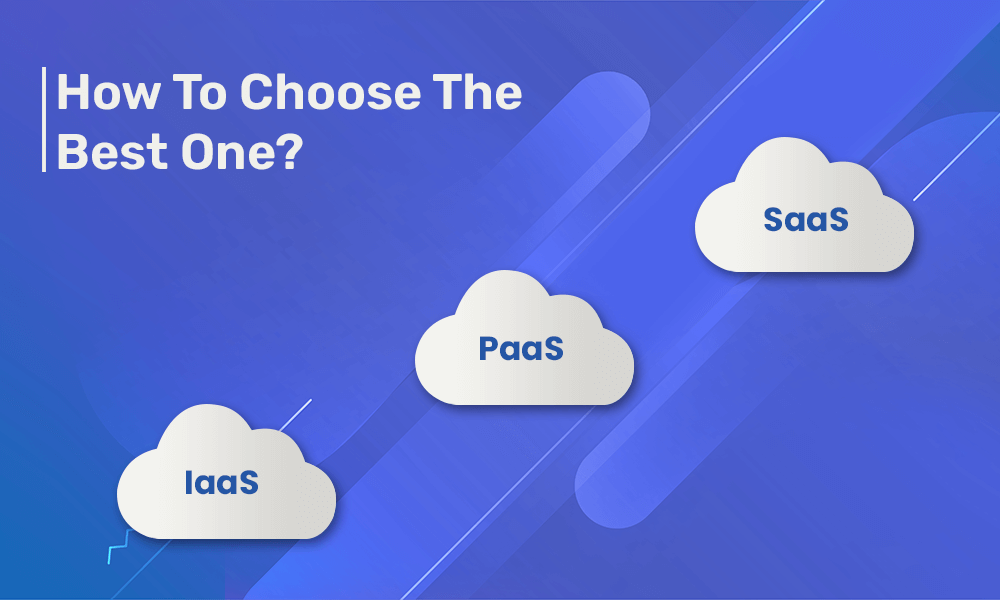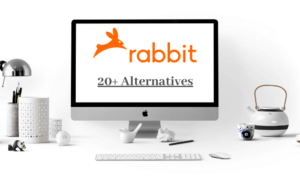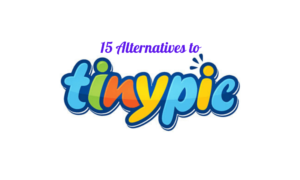As businesses are stepping ahead in 2022, they are more likely to get convinced to digitize themselves. One of the significant elements of this trend is cloud technology.
The switch to the cloud for managing business and storing data doesn’t seem to be too alien for companies worldwide, as today, more and more of them prefer to offer their products and services through the use of online apps and websites.
If you have an idea or have done some research for the right cloud technology for your business, you must have come across terms like
- SaaS= Software-as-a-Service
- PasS= Platform-as-a-Service
- IaaS= Infrastructure-as-a-Service
These three enjoy the highest level of attention and demand throughout the entire business landscape.
Few Statistics Showcasing the High Present & Future Demand of Cloud Technology:
- The overall cloud computing market is forecast to grow by double digits over the next few years, with the total global market for public cloud services exceeding 250 billion U.S. dollars today. PaaS accounts for about 20 percent of this market.
- The global public cloud software as a service (SaaS) market reached 157 billion U.S. dollars in size in 2020, which doubled the market size of 2014.
- By 2022 the public cloud PaaS market is forecast to reach almost 60 billion U.S. dollars in revenue.
- Infrastructure as a Service represented about a quarter of the overall cloud computing market in 2019 and public cloud IaaS revenues are expected to rise significantly over the coming years, from around 44.5 billion U.S. dollars in 2019 to more than 80 billion U.S. dollars by 2022. In 2020, the infrastructure as a service market grew to 51.4 billion U.S. dollars.
The above statistics are taken by Statista and prove the rising demand and acceptance of these three cloud technologies. So let’s know what these three are!
A Brief Look on SaaS, PaaS, & IaaS
Let’s briefly look at the definition of three to understand them and their differences in detail.
1. SaaS (Service as a Software)
In this cloud solution, the brand provides software under a license fee or other revenue model to be used by other businesses or individuals. At the same time, a third party can handle the maintenance of the same.
In simpler words, the vendor provides software over the internet, where any can use it after paying the specified amount and agreeing to the user policy.
This is the most common and fastly growing cloud solution, as apart from businesses, even individuals use such software.
Famous examples of SaaS- Salesforce.com, Google G Suite, Netflix, HubSpot, and more.
2. PaaS (Platform as a Software)
Here the provider owns the entire infrastructure and software for providing a platform through which different developers around the world can develop custom applications.
Programmers primarily use this for developing, running, and managing apps without the stress of having software updates and hardware maintenance.
As it provides a moderate scope of customization with high cost-effective development, PaaS solutions are trending. At the same time, providers are making sure that their offerings offer a broader scope for customization.
The famous PaaS examples are Google App Engine, Microsoft Azure, Red Hat OpenShift, Zoho Creator, and more.
3. IaaS (Infrastructure as a Software)
The clients of this cloud solution receive an entire infrastructure through virtualization technology. This includes servers, operating systems, storage systems, and more.
Here the provider maintains all the hardware requirements while the client enjoys complete control, thus the responsibility of managing applications, runtime, OSes, middleware, and data.
With this service, the client gets high authority over the tools and access to high-level APIs without owning them. This is even the main reason behind this solution’s growth, and clients have the option of paying as they go, thus proving to be a cost-effective solution.
Famous examples of IaaS are Amazon Web Services (AWS), Google Compute Engine (GCE), Linode, Oracle Cloud Infrastructure, IBM Cloud, and more.
SaaS Vs. PaaS Vs. IaaS
By their definition and examples, it must be clear to you by now what SaaS, PaaS, and IaaS are about. When cloud solutions are slowly becoming a necessity, it is important to discuss the difference between the three.

First, Let’s Talk about SaaS & PaaS:
the former just provides software with no ownership or development rights. From application to data to server, everything is maintained by the provider. Whereas in PaaS, the user gets the option for building their applications. These applications can be for business use or commercial. Through PaaS, even skilled individuals have been able to realize their app idea on their own. As they get access to tools and everything, the functionality and security are again dependent on the provider.
Now, Let’s Talk about PaaS & IaaS:
Continuing from above, PaaS only provides independent control to users towards the application and data, but not on the hardware and other complex software. If you ask a visionary app owner, they’ll surely agree with the statement that the more innovative your app idea, the more control over tools you’ll require. So this brings us to IaaS, which provides the user with a fully capacitated infrastructure that a third party manages. The user gets control over several hardware options and complex software, which are still slightly less compared to on-premises, but a lot more when compared to PaaS & SaaS.
Based on the image, the difference between SaaS, PaaS, & IaaS can be put in simple words, as in with IaaS, a user can create a platform for other business to use (this product then will be called PaaS), and with this product, a business can create a software/application for specific use (this product will now be called SaaS).
Hence because of the complexity gap between SaaS & IaaS, it won’t be right to layout any difference between the two.
When to Use Which Cloud Solution
In the last section of SaaS vs. PaaS vs. IaaS, let’s discuss which solution suits which situation, so apart from their definition and differences, there’s clarity regarding their use as well.
When to Use SaaS
If you want a software or an app to facilitate certain aspects or processes of your business or business management as a whole. But you don’t have the skill or even will to develop and maintain an entire software or app, then using SaaS services is the best option for you.
For example, businesses use accounting software, food businesses use online ordering platforms as Uber eats and others, digital marketing departments/agencies using Hubspot or other tools.
When to Use PaaS
If your software/application requirements demand a higher degree of control & customization, you shall move to PaaS. Here, as mentioned above, you can make applications and manage data by yourself. Providing you benefits of almost owning such a software/application. Also, this is a highly cost-effective development option.
For example, businesses using software design kits (SDKs) for custom app development.
When to Use IaaS
If you require a whole infrastructure for building and providing complex IT solutions to other businesses or yourself, you don’t have enough budget to purchase such a huge setup. Often, budding IT companies & startups require IaaS services. Rarely a non-IT brand demands such a service, as often they outsource such complex work to an IT company.
For example, a budding social media company needs servers to store data as the need arises, or an IT service provider needs dedicated servers for storing data.
See Also:
- Why SaaS Is The Best Business Model
- SaaS Industry Trends and Future of SaaS
- Benefits of Effective Data Mining in CRM
- In-house Development vs. Outsourcing: Benefits and Drawbacks
Final Thoughts
By now, we are sure that you must have gained a high degree of understanding of SaaS vs. IaaS vs. PaaS. Businesses that look forward to leveraging technology’s advanced benefits need to realize the benefits and introduce cloud solutions in their workplace today. For it will surely ease your digital business or the process of digitizing it while increasing your ROI.





















